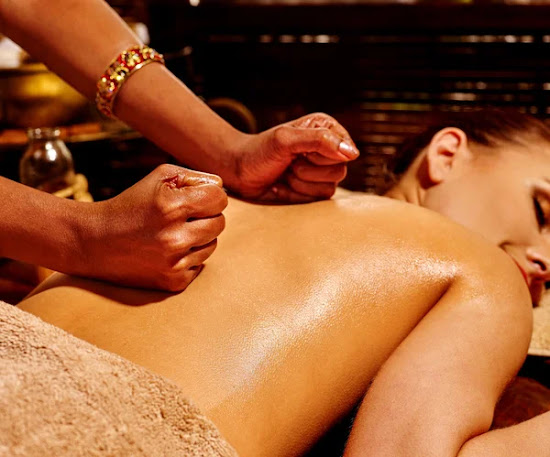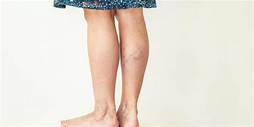Several factors can contribute to weakened or damaged valves, including:
Age:
As people get older, the valves in their veins may naturally weaken or become less effective.
Genetics:
Some people are more prone to developing varicose veins due to inherited traits such as weak vein walls or faulty valves.
Gender:
Women are more likely than men to develop varicose veins, possibly due to hormonal factors such as pregnancy and menopause.
Pregnancy:
The weight and pressure of a growing fetus can put additional strain on the veins, increasing the risk of developing varicose veins.
Obesity:
Being overweight or obese can put extra pressure on the veins, making them more prone to damage.
Standing or sitting for long periods:
Jobs or activities that require prolonged periods of standing or sitting can increase the pressure on the veins and contribute to varicose veins.
Other medical conditions:
Certain medical conditions, such as deep vein thrombosis (DVT), can increase the risk of developing varicose veins.
Lack of exercise:
Regular exercise helps to promote healthy circulation and reduce the risk of varicose veins.
Smoking:
Smoking can weaken blood vessels and impair circulation, increasing the risk of developing varicose veins.
Hormonal changes:
Changes in hormonal levels, such as those that occur during puberty, pregnancy, or menopause, can affect the blood vessels and increase the risk of varicose veins.
Trauma:
Injuries to the legs, such as fractures or muscle tears, can damage the veins and increase the risk of developing varicose veins.
Sun exposure:
Prolonged exposure to the sun can damage the skin and veins, increasing the risk of varicose veins.
While many of these risk factors cannot be avoided, there are steps that can be taken to reduce the risk of developing varicose veins, such as maintaining a healthy weight, exercising regularly, avoiding prolonged periods of standing or sitting, and wearing compression stockings.
Acupressure Treatment For Varicose Veins:
The acupressure treatment mentioned below is effective and helpful for Varicose Veins.
Please see the above video for reference.
- As mentioned above, the main causes of Varicose Veins are lack of exercise, standing or sitting for long periods, the inability of leg veins to pump blood back to the heart against gravity, and weakening of veins due to age, obesity, and pregnancy.
- Locate the suggested acupressure points and apply some oil to the points. Press each point in the pumping manner (press release, press release) for 1 minute using a jimmy or a finger.
- First point is St-42. This point lies on the top of the foot, 2 thumb-widths below the center of the ankle joint.
- Second acupressure point is K-1. There are 2 rounded balls on the sole of the foot. This point is located between these 2 balls as shown in the video.
- Third point is Ex-36. This is a group of 4 points each lying half a thumb-width from the skin margin between 2 adjacent toes.
- Fourth point is Sp-4. This point lies almost at the center of the inner border of the foot, in a notch between 2 bones. See the video.
- Fifth point is Sp-6. This point lies 4 finger-widths up the ankle bone, just behind the vertical leg bone.
Yoga is also the perfect treatment for Varicose Veins. Here are some very good Yoga Poses that you can perform at home easily:
6 Best Yoga Poses For Varicose Veins:
Please see the above video for reference.
- Repeat all the yoga poses given in video 3 to 5 times.
- First pose is Forward Bend Pose (Uttanasana). Bend slowly in the pose as shown in the video above and stay for 3 minutes.
- Second pose is Legs Up The Wall Pose (Viparita Karani). Raise your legs against the wall as shown in the video and stay for 5 minutes.
- Third pose is Boat Pose (Naavasana). Bend slowly in the pose as shown in the video and stay for 3 minutes.
- Fourth pose is Supported Shoulder Stand Pose (Sarvangasana). Raise your legs and hips as in the video and stay for 3 minutes.
- Fifth pose is Fish Pose (Matsyasana). Bend your body as shown in the video and stay for 3-5 minutes.
- Sixth yoga pose is Wndrelease Pose (Pawanmiktasana) Bend your legs and press them with your arms as shown in the video and stay for 3-5 minutes.
Do these Yoga Asanas preferably on empty stomach or after a light meal.
Some More Ayurvedic Home Remedies For Varicose Veins
Ayurvedic medicine offers several home remedies that may help alleviate the symptoms of varicose veins.
Massage with essential oils:
Massaging the affected area with essential oils such as cypress, peppermint, or lavender may help improve circulation and reduce inflammation.
Herbal remedies:
Herbs such as horse chestnut, gotu kola, and witch hazel may help improve vein health and reduce swelling.
Lifestyle changes:
Ayurvedic practitioners recommend regular exercise, maintaining a healthy weight, and avoiding prolonged periods of standing or sitting as ways to promote healthy circulation and reduce the risk of varicose veins.
Dietary changes:
Ayurvedic medicine emphasizes the importance of a healthy diet for overall health, and recommends avoiding processed foods and increasing consumption of fruits, vegetables, and whole grains.
Yoga and meditation:
Practicing yoga (the best yoga poses are given above) and meditation may help reduce stress and promote relaxation, which can in turn improve circulation and reduce the risk of varicose veins.
Ayurvedic herbs and supplements:
Ayurvedic practitioners may recommend various herbs and supplements such as guggul, triphala, and ashwagandha to help reduce inflammation and improve vein health.
Hydrotherapy:
Alternating hot and cold water therapy may help improve circulation and reduce inflammation in the affected area.
Simply soak a towel in hot water, wring it out, and wrap it around the affected area for a few minutes, followed by a cold water compress for a few minutes.
Acupuncture:
Acupuncture is an ancient Chinese medical practice that involves inserting thin needles into specific points on the body to promote healing and balance.
Some studies have suggested that acupuncture may help improve circulation and reduce the symptoms of varicose veins.
Ayurvedic panchakarma therapies:
 |
Ayurvedic panchakarma therapies are effective
in Varicose Veins Problems |
Ayurvedic panchakarma therapies such as basti, virechana, and raktamokshana may help improve circulation, reduce inflammation, and promote overall health. Therefore they are effective in Varicose Veins Problem.
Frequently Asked Questions with answers for varicose veins:
Here are some frequently asked questions and their answers about varicose veins:
Q: What are varicose veins?
A: Varicose veins are enlarged, twisted veins that usually occur in the legs. They can be blue, red, or flesh-colored and may be raised above the surface of the skin.
Q: What causes varicose veins?
A: Varicose veins are caused by weakened or damaged valves inside the veins.
These valves normally prevent blood from flowing backward, but when they become weak or damaged, blood can pool and accumulate in the veins, causing them to enlarge and become twisted.
Q: Who is at risk for developing varicose veins?
A: Anyone can develop varicose veins, but they are more common in older adults, women, and people who are overweight or obese.
They are also more common in people who stand or sit for long periods of time.
Q: What are the symptoms of varicose veins?
A: Symptoms of varicose veins can include swelling, pain, aching, heaviness, or fatigue in the legs, as well as itching or burning around the affected veins.
Q: Can varicose veins be prevented?
A: While some risk factors for varicose veins, such as age and genetics, cannot be avoided, there are steps you can take to reduce your risk.
These include maintaining a healthy weight, exercising regularly, avoiding prolonged periods of standing or sitting, and wearing compression stockings.
Q: How are varicose veins treated?
A: Treatment options for varicose veins may include lifestyle changes, such as exercise and weight management, wearing compression stockings, and medical treatments such as endovenous laser treatment (EVLT), sclerotherapy, or surgery.
Q: Are there any complications associated with varicose veins?
A: While varicose veins are generally considered a cosmetic issue, they can sometimes lead to more serious complications such as skin ulcers, bleeding, and blood clots.
If you are experiencing severe pain, swelling, or other symptoms, it's important to speak with a healthcare professional for an accurate diagnosis and treatment plan.
Q: Are there any natural remedies that can help with varicose veins?
A: Some natural remedies that may help with varicose veins include massaging the affected area with essential oils like cypress, peppermint, or lavender, consuming herbs like horse chestnut, gotu kola, and witch hazel, and practicing yoga and meditation to reduce stress and promote relaxation.
Q: Can pregnancy cause varicose veins?
A: Yes, pregnancy can increase the risk of developing varicose veins due to the increased pressure on the veins in the pelvic area and legs.
Hormonal changes during pregnancy can also weaken the walls of the veins.
Q: How long does it take to recover from varicose vein treatment?
A: Recovery time can vary depending on the type of treatment you receive.
Endovenous laser treatment and sclerotherapy are minimally invasive procedures that typically allow for a quick recovery with minimal discomfort. Surgery may require a longer recovery time.
Q: Are there any side effects associated with varicose vein treatment?
A: Side effects of varicose vein treatment may include swelling, bruising, pain, and a sensation of tightness or pressure in the treated area.
These side effects are generally mild and temporary.
Q: Can varicose veins come back after treatment?
A: Varicose veins can come back after treatment, particularly if you have underlying risk factors such as age, genetics, or lifestyle habits.
However, with proper care and management, the risk of recurrence can be reduced.
Q: Can exercise make varicose veins worse?
A: While high-impact activities like running or jumping may put additional stress on the veins and exacerbate symptoms, low-impact exercises like walking, swimming, and cycling can actually help improve circulation and reduce the risk of varicose veins.
It's important to speak with a healthcare professional if you have any questions or concerns about varicose veins, their causes, or their treatments.
Friends, Stay Fit, Stay Happy
----------------------------------------------------------------------------
Friends, if you liked it, please share it with your friends.
SHARING IS CARING.
Compiled by: Paramjit Singh Rana



Comments
Post a Comment